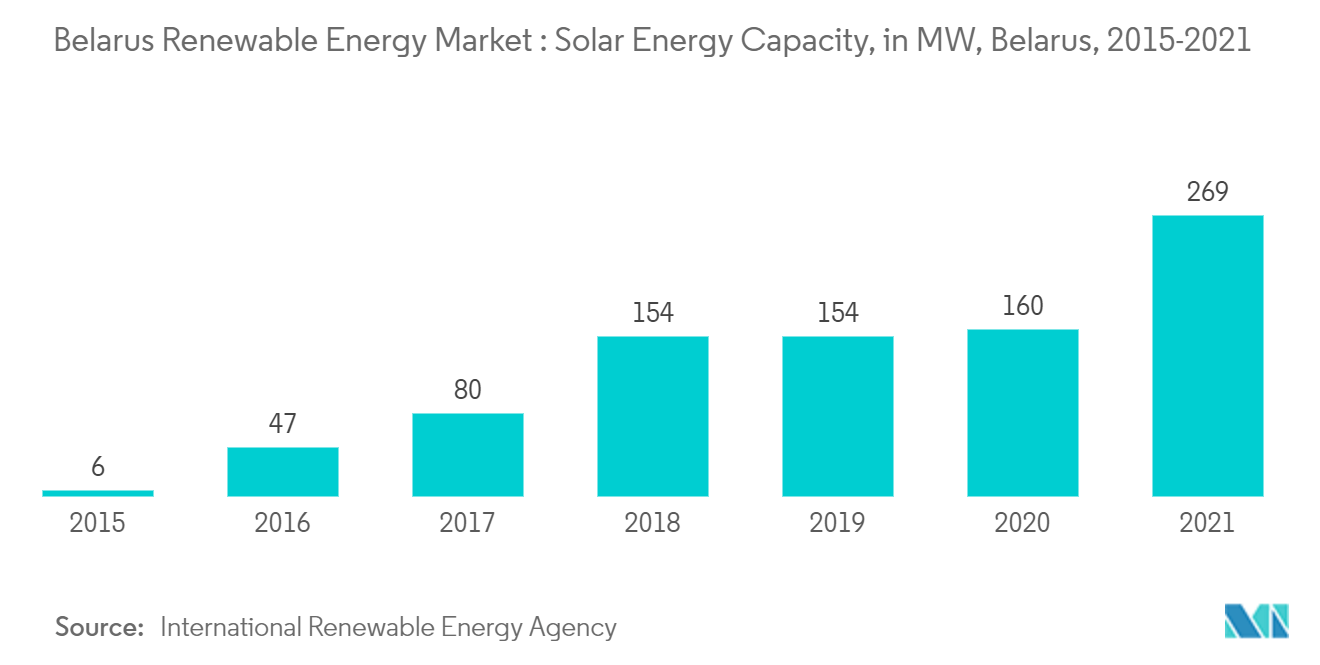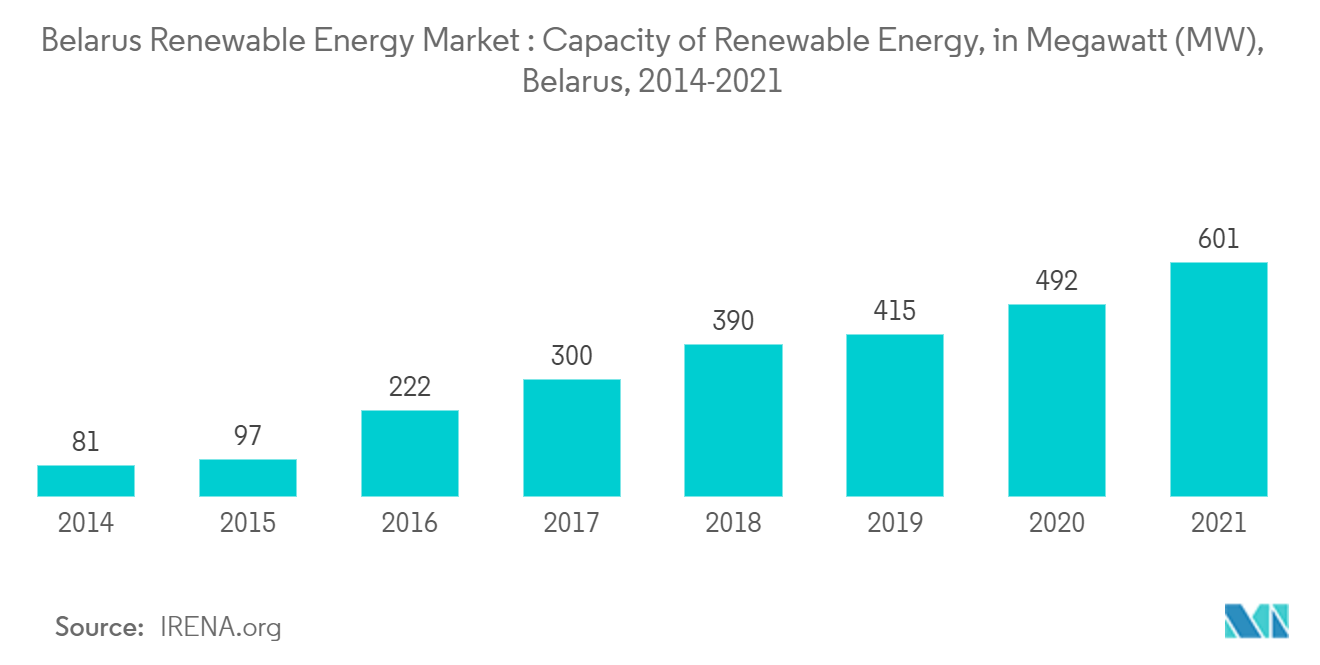Market Trends of Belarus Renewable Energy Industry
This section covers the major market trends shaping the Belarus Renewable Energy Market according to our research experts:
Solar Energy to Dominate the Market
- In 2021, out of the total installed capacity of renewable sources, approximately 44.7% of the installations were solar energy in the country. The installed capacity of solar power in 2021 was registered to be 269 megawatts (MW), which was higher than that in 2020, 160 megawatts (MW).
- In 2022, Belarus has about 600 MW of renewable energy capacity with 82 photovoltaic stations, 53 hydroelectric power plants, 30 biogas complexes, over 100 electric power plants, and 10 wood-fired mini-CHPs.
- Belarus possesses the technological capability and economic reasoning required to conduct an energy transition and boost the amount of "green" energy in the Final Energy Supply to 81% by 2050. The government of Belarus also started using its land, which was affected by the Chernobyl Nuclear accident, as a place to install a solar power plant.
- The Government of Belarus is continuously putting efforts in favor of installing renewable energy. The most ambitious energy and environmental targets for final consumption by 2050 will have major economic and societal benefits in Belarus. The realization of the "energy transition" will greatly boost the country's energy independence and energy efficiency in all areas of the economy, as well as lower the risk of repeated nuclear accidents and greenhouse gas emissions.
- Therefore, owing to the aforementioned factors, it can be stated that solar energy is likely to see significant growth in the Belarusian renewable energy market during the forecast period.

Increasing Renewable Energy Installations are Expected to Drive the Market
- Increasing investments in renewable energy in the county, leading to increasing renewable energy installed capacity, is expected to drive the country's renewable energy capacity.
- In 2021, the total renewable energy generation plant installed capacity in the country was 601 megawatts (MW), which was higher than the installation capacity of 2020, 492 megawatts (MW). Renewable energy in the country includes hydro, solar, wind, and bio-energy.
- Belarus intends to keep renewable energy at 7% of total energy consumption in 2025 and 8% in 2030. All of this enables not just a reduction in the consumption of traditional energy sources but also a reduction in CO2 emissions. It is planned to have 630 MW of renewable energy capacity by 2025. This figure will allow the share of RES to remain at 8%.
- Belarus has a good possibility of meeting the projected percentage of renewable energy in total energy generation in both 2025 and 2030. However, with the completion of the nuclear power plant currently under construction in Belarus, the share of renewable energy will be drastically reduced due to the lower cost of nuclear energy.
- Hence, the above points indicate that increasing renewable energy capacity is expected to drive the Belarusian renewable energy market during the forecast period.


